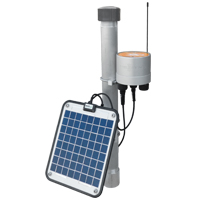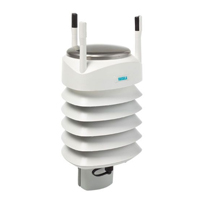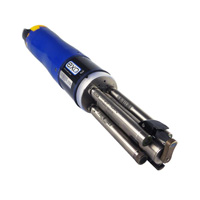 Located near Ball State University in Muncie, Ind., Cooper Farm is a diverse land area comprised of two properties: the Cooper Woodland Area and Cooper Natural Area. Within the farm, distinct micro-environments reflect various natural habitats found in east-central Indiana. The Cooper Farm offers students at Ball State an excellent outdoor laboratory for hands-on environmental education.
Located near Ball State University in Muncie, Ind., Cooper Farm is a diverse land area comprised of two properties: the Cooper Woodland Area and Cooper Natural Area. Within the farm, distinct micro-environments reflect various natural habitats found in east-central Indiana. The Cooper Farm offers students at Ball State an excellent outdoor laboratory for hands-on environmental education.
A major effort is underway to more actively restore natural communities in some areas of this 88-acre farm, including wetlands, prairie, and forest. Conversely, other areas will be left to develop without active restoration, to provide opportunities for studying the succession process. Researchers hope to establish baseline environmental data at various locations within the farm so they can better understand these processes.
NexSens Technology was contacted to assist in designing and implementing permanent monitoring stations for the biotic and abiotic components of the Cooper Field Area ecosystems.
Monitoring micro-environments
 Ball State University researchers selected radio telemetry as the most effective telemetry option for their monitoring network. Each of the five field site locations transmit data via license-free spread-spectrum radio to a NexSens radio base station, which is connected to a PC at a nearby farmhouse.
Ball State University researchers selected radio telemetry as the most effective telemetry option for their monitoring network. Each of the five field site locations transmit data via license-free spread-spectrum radio to a NexSens radio base station, which is connected to a PC at a nearby farmhouse.
Project members selected an optimal location on the farm to simultaneously monitor multiple weather and soil parameters. Atop a two-inch deployment pole, a Vaisala WXT-series multi-parameter weather sensor simultaneously monitors wind speed and direction, liquid precipitation, barometric pressure, temperature, and relative humidity.
Buried within the ground, Stevens Hydra Probe II sensors simultaneously monitor soil moisture, salinity, and temperature by measuring the electrical response of the soil. Researchers also set up a water evaporation monitoring system consisting of an evaporation pan and OTT Thalimedes shaft encoder. NexSens iChart software automatically calculates water evaporation based on changes in the water level.
At four stream and wetland sites throughout the farm, YSI multi-parameter sondes collect water quality data. Each sonde simultaneously measures temperature, conductivity, dissolved oxygen, pH, ORP, and turbidity data at user-specified intervals. NexSens data loggers collect the instruments’ water quality data, sending it at hourly intervals to the base station.
NexSens iChart software posts real-time environmental data to the web using a NexSens WQData web datacenter, providing open access to students and researchers. The water quality and weather monitoring sites, along with this easily accessible online data, will enhance opportunities for both education and research by students and faculty at Ball State University.
The NexSens X2 Environmental Data Logger offers the latest in real-time monitoring technology with wireless communication, large plug-and-play sensor library, and ultra-low power consumption.
The Vaisala WXT536 Multi-Parameter Weather Sensor simultaneously measures air temperature, humidity, pressure, rainfall and wind in a compact platform with optional heating.
The Stevens HydraProbe soil moisture sensor provides simultaneous measurement of soil moisture, salinity, and temperature using a unique patented design.
The YSI EXO3 is a purpose-built sonde for monitoring major water quality parameters, including: pH, conductivity, temperature, turbidity and dissolved oxygen.
WQData LIVE is a web-based project management service that allows users 24/7 instant access to data collected from remote telemetry systems.





